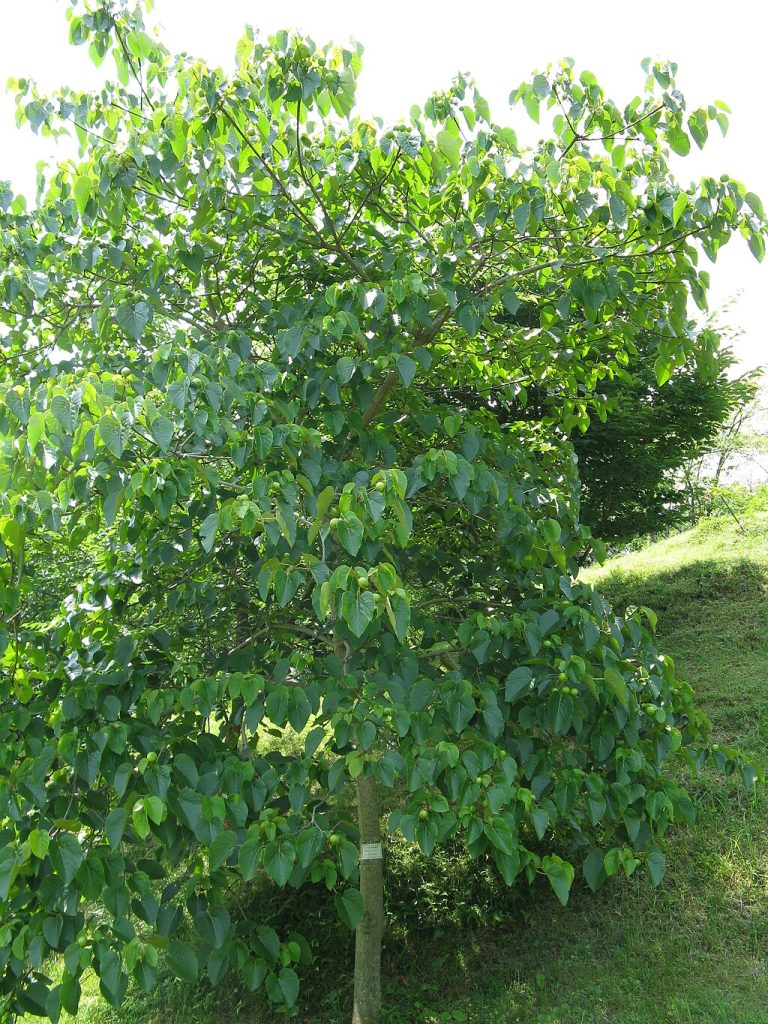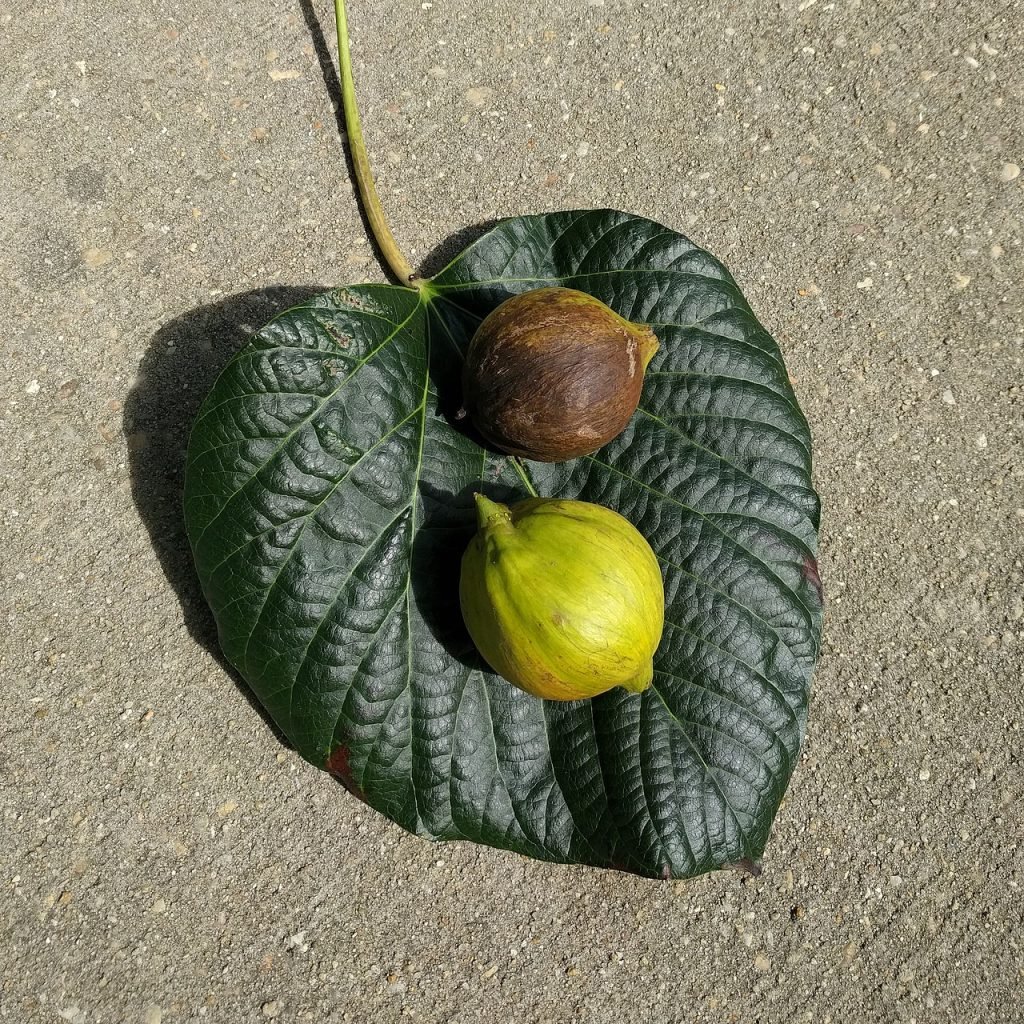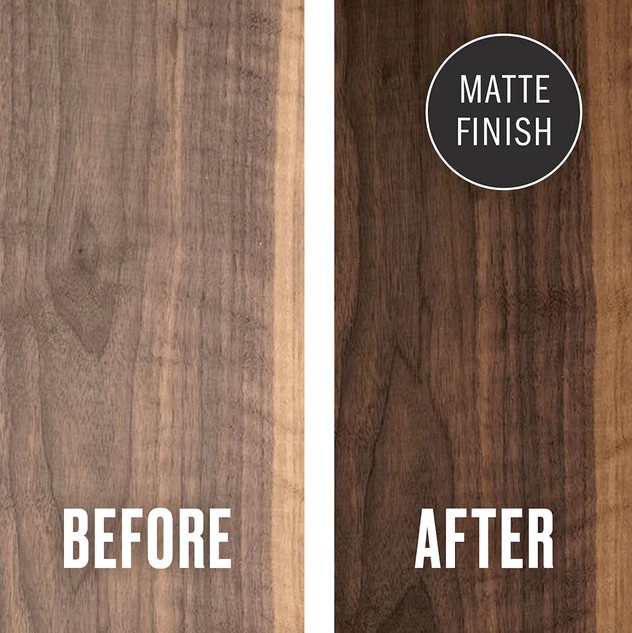What is Tung Oil?
Tung oil is a natural, non-toxic, and food-safe oil that polymerizes when exposed to air, forming a durable, water-resistant, and flexible finish. It’s often referred to as “China wood oil” due to its origin in China. Pure tung oil is distinct from “tung oil finish,” which can be a blend of tung oil, other oils, and varnishes. For the best results and to fully benefit from tung oil’s unique properties, it’s crucial to use 100% pure tung oil.
Pros and Cons of Tung Oil
Tung oil offers a range of advantages and disadvantages that are important to consider before choosing it as a wood finish.
Pros
- Natural and Non-Toxic: Pure tung oil is an environmentally friendly option and safe for use on food-contact surfaces. It has no VOCs (volatile organic compounds).
- Food Safe: Once fully cured, pure tung oil is safe for contact with food, making it ideal for kitchen countertops, cutting boards, and dining tables.
- Penetrating: It soaks deep into the wood fibers, fortifying them from within rather than forming a surface film.
- Water-Resistant: It provides excellent protection against moisture, making it suitable for furniture and surfaces that might come into contact with liquids. It creates a barrier that repels water, making spills bead up on the surface.
- Durable and Flexible: The finish is resistant to abrasion and can withstand minor impacts without cracking or chipping, unlike some harder finishes. The cured oil remains somewhat elastic, allowing the wood to expand and contract with changes in humidity without cracking or peeling.
- Enhances Wood’s Natural Beauty: Tung oil penetrates the wood, bringing out its natural grain and color, resulting in a warm, low-sheen finish.
- Easy to Repair: Scratches or damaged areas can often be spot-repaired without needing to strip and refinish the entire piece.
- Mold and Mildew Resistant: Its natural properties help to inhibit the growth of mold and mildew.
Cons
- Long Curing Time: Tung oil takes a considerable amount of time to fully cure, often weeks or even months, depending on conditions and the number of coats.
- Multiple Coats Required: Achieving optimal protection and appearance usually requires several thin coats, which adds to the application time.
- Not as Hard as Varnish: While durable, it may not offer the same level of scratch resistance as a hard polyurethane varnish.
- Potential for Allergies: Though rare, some individuals may have an allergic reaction to tung oil.
How and When to Reapply Tung Oil on a Table
Reapplying tung oil to a table is a straightforward process that helps maintain its protective qualities and aesthetic appeal.
When to Reapply
The need for reapplication depends on the table’s usage and exposure. For heavily used dining tables or outdoor furniture, reapplication might be needed every 1-2 years. For less-used indoor tables, every 3-5 years might suffice. You’ll notice the finish starting to look dull, dry, or showing signs of water absorption (e.g., water spots that don’t bead up).
How to Reapply
- Clean the Surface: Thoroughly clean the table surface to remove any dust, grime, or old wax. A mild soap and water solution followed by a clean water rinse and complete drying is usually sufficient.
- Light Sanding (Optional): For a smoother finish or to address minor imperfections, a light sanding with fine-grit sandpaper (e.g., 220-grit) can be done. Always sand with the grain.
- Wipe Down: Remove all sanding dust with a tack cloth or a damp cloth followed by drying.
- Apply a Thin Coat: Apply a very thin, even coat of pure tung oil using a clean, lint-free cloth or a foam brush. Work in small sections, wiping with the grain.
- Allow to Penetrate: Let the oil penetrate the wood for 20-30 minutes.
- Wipe Off Excess: Crucially, wipe off any excess oil completely with a clean cloth. Any oil left on the surface that doesn’t penetrate will cure into a sticky, gummy residue.
- Dry Time: Allow each coat to dry for at least 24-48 hours, or longer in humid conditions, before applying the next.
- Repeat: Apply 1-2 more thin coats, following the same penetration and wipe-off steps, until the desired level of protection and sheen is achieved.
- Full Cure: Allow the final coat to fully cure for several weeks before subjecting the table to heavy use.
What it Looks Like After Application
After initial application and curing, tung oil imbues wood with a warm, amber glow. It darkens the wood slightly, enhancing its natural grain and character without creating a glossy, artificial sheen. The finish is typically a low-sheen, matte, or satin look, depending on the number of coats and how well the excess was wiped away. It feels smooth and natural to the touch, like finely sanded wood rather than a plastic coating.


